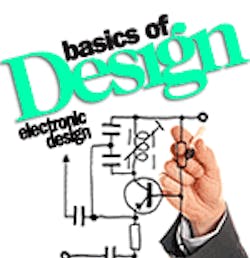As field-programmable gate arrays (FPGAs) continue to drop in price while adding significant capability, their use has expanded greatly in industrial control and monitoring applications.
And since FPGAs are in-system/field-programmable and highly flexible, while including a plethora of drop-in functionality, they are ideal for rapid development and upfront system verification.
Add the capability of constructing algorithms built from pre-build functional blocks and logic gates, and you have a highly parallel execution path that can be partitioned and optimized for each task in a given application.
The ability to construct complex algorithms in hardware has attracted engineers of various disciplines outside of digital logic designers to potentially use FPGAs to develop complex electromechanical systems that typically include sensors, actuators, motors, and other components.
Dubbed mechatronics (electromechanical), these types of designs synergistically combine electrical, mechanical, and software components. Systems that fall into this category include medical and industrial equipment, machinery, and vehicle systems.
Mechatronics system designs present challenges that digital designers aren't accustomed to attacking, such as the requirement to simultaneously simulate the behavior of the FPGA logic and the multi-physics response of the system under test. For example, such designers must figure out how the pulse-width modulation (PWM) commutation signal generated by the FPGA affects the motor's torque and velocity.
FPGA design and simulation tools were created with digital designers in mind. Yet as designers increasingly use FPGAs in mechatronic systems for roles traditionally coveted by processors, instead of writing text to describe design functionality as digital engineers are accustomed to doing, a more graphical approach is needed to describe and simulate the complex physical interactions.
To attract other engineering disciplines, new mechatronics-oriented FPGA development tools are needed to bridge the gap between the digital world of the FPGA and the analog world to which the FPGA is connected. To address the complexity of combining the digital and analog worlds, the heart and brains of such a system are typically one or more inexpensive FPGAs, which provide the interface to sensors and actuators, control logic execution, signal processing, and safety interlocking.
If you want to prototype quickly while validating the way the FPGA logic will respond to the closed-loop response of the system, the development environment must be simple and fast. Also, the simulation tools must span across engineering disciplines. The mechatronics approach ultimately helps mitigate risk, reduces development time and costs, and enhances design optimization, providing peace of mind to the design team.
Rapid FPGA prototyping requirements
- Full featured component testbench development
- Comprehensive debugging tools to quickly iterate on the FPGA code
- Multi-physics dynamic simulation capability
- Simulation support for timing and triggering relationships between FPGA IP cores
- Readily available mechatronics IP blocks such as PID control, filters, state machines, counters, and timers
Key development techniques
- Modularize code into blocks for simple unit testing
- Instantiate I/O interfaces outside IP cores for easier testing with simulated I/O
- Use simulated clock signals during simulation
- Use an asynchronous state-machine architecture for IP blocks
Benefits to mechatronics FPGA design
- Faster development using insights gained during simulations
- Iterate and innovate without waiting for long compilations
- Test worst-case scenarios or heavy load conditions
- Make better component selection choices for sensors, actuators, and analog-to-digital converters (ADCs)
See Associated Figure
See Step 1
See Step 2
See Step 3
See Step 4
